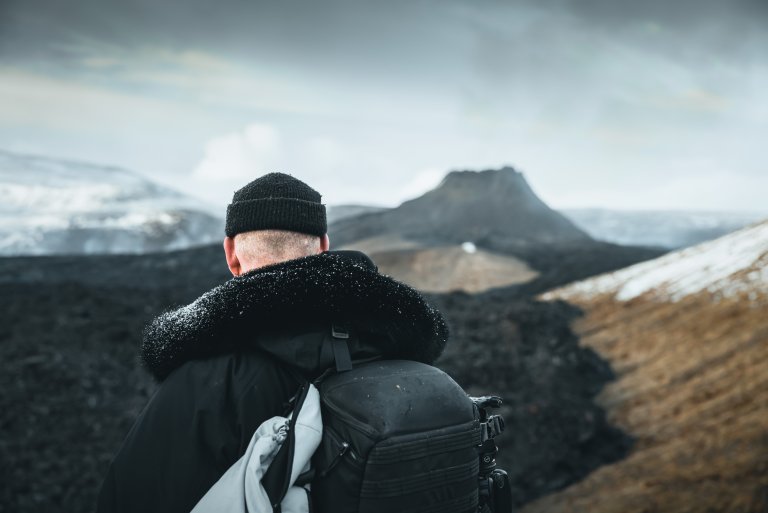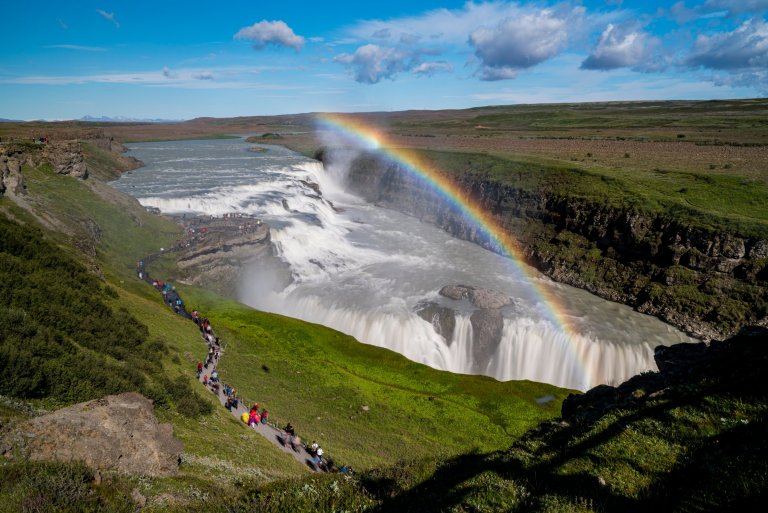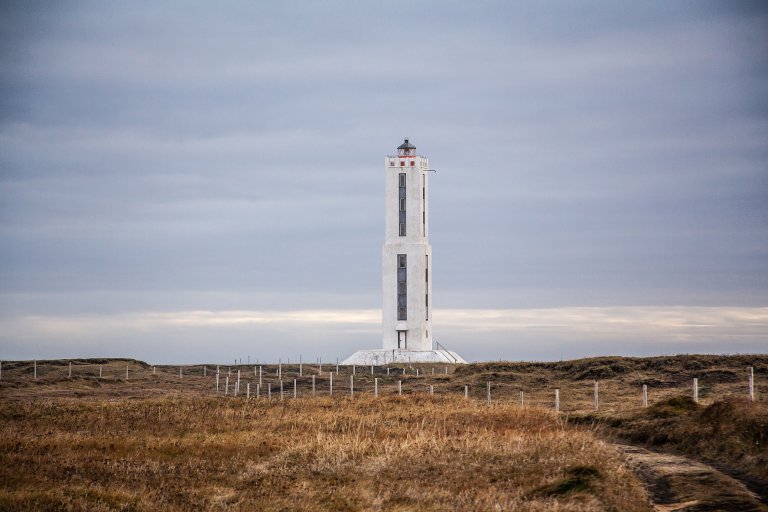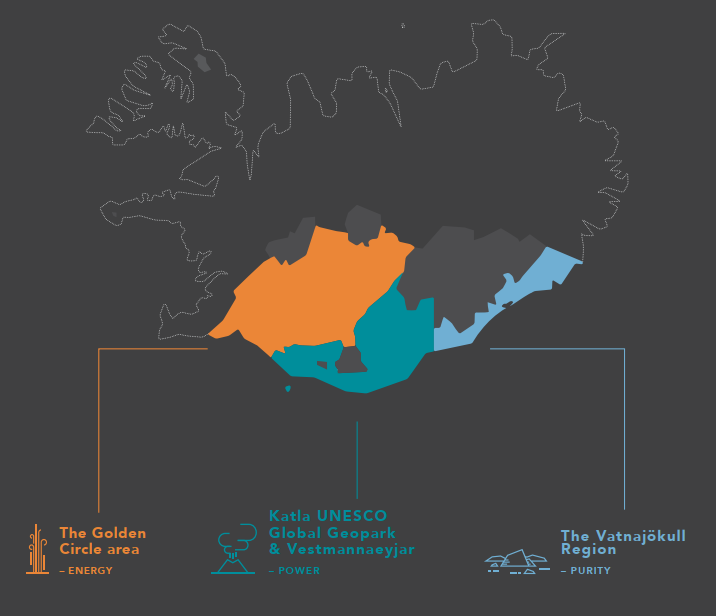The excellent variety and the quality of services enable you to enjoy the best of what Iceland offers. This great diversity, both in natural attractions and activities, inspires you to explore the area in three parts where every one of them is well worth the visit; the Golden Circle area, Katla Geopark, and Vestmannaeyjar as well as the Vatnajökull region.
The Golden Circle area reaches from Selvogur west of Þorlákshöfn to the east of the town of Hella, along the seaside, and into the highlands. The area is as vast as it is diverse; there is a wide variety of attractions such as Þingvellir National Park, Gullfoss, and Geysir, which together comprise the golden circle, the highland areas of Kerlingarfjöll, Kjölur, Sprengisandur and Landmannalaugar, Langjökull glacier and the Hekla volcano with its surrounding area, to name a few.
The area has a rich food culture and a longstanding history of producing dairy products, meat, and vegetables. The area's natural geothermal energy has also been a source of innovation and inspiration for food, and you might find restaurants that use hot springs to cook some dishes.
Katla Geopark is Iceland's first geopark, and it opens up a natural wonderland to visitors. A top priority of the park is to protect the natural environment, promote local, sustainable development, introduce local culture, and strongly emphasize nature tourism.
Katla UNESCO Global Geopark got its name from one of its most known volcanoes, Katla, which lies under the glacier Mýrdalsjökull.
Katla Geopark is, in every sense, the land of ice and fire, with towering glaciers and active volcanoes. These forces have been shaping the land for thousands of years. This area has amazing landscapes – mountains, lakes, black beaches, green pastures and meadows, powerful glacial rivers, beautiful waterfalls, and vast lava fields.
The Westman Islands are a group of islands off the south coast of Iceland. They consist of 15 islands and 30 cliffs and skerries that make up the archipelago. Heimaey is the largest island and the only inhabited one.
The Vatnajökull Region reaches from majestic Lómagnúpur in the west to scenic Hvalnes cape in the east. In this area, travelers can visit Vatnajökull, the largest glacier in Europe, and its surrounding area, which has a lot to offer. Vatnajökull National Park is a magnificent area that boasts incredible ice caves, magical lagoons of floating ice, and crawling outlet glaciers, some within easy reach. In the western part of the Vatnajökull Region is Skeiðarársandur, the world's largest black "glacier" sand area.
You will be in awe while traveling along the stunning countryside in the southeast, nested between the glaciers and the Atlantic coastline. In addition, the scenic fishing town of Höfn is well worth a visit, as it is also known as the "Lobster Capital" of Iceland.




